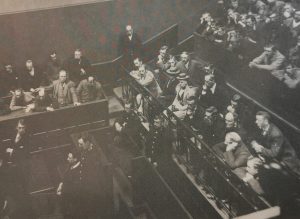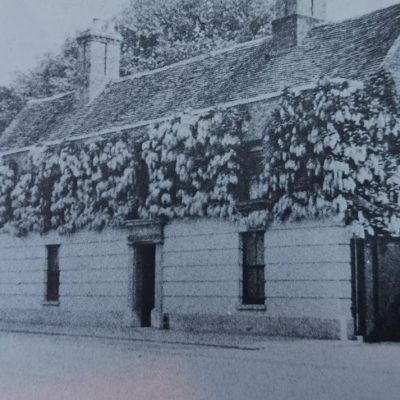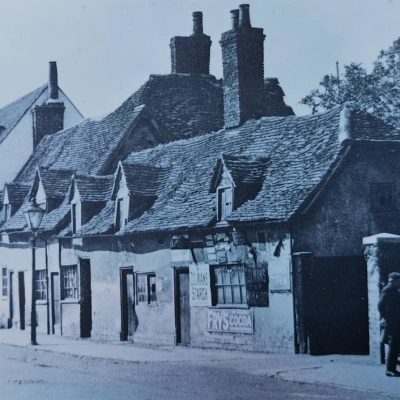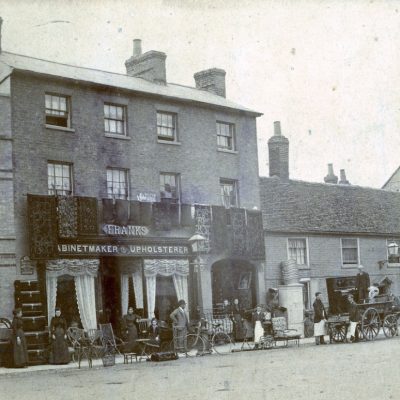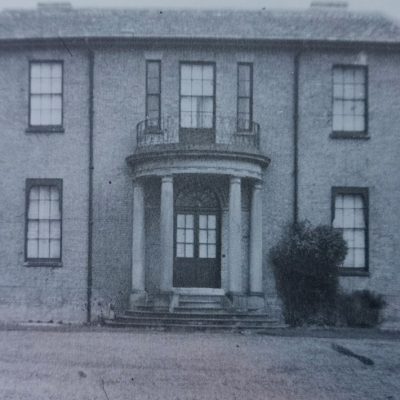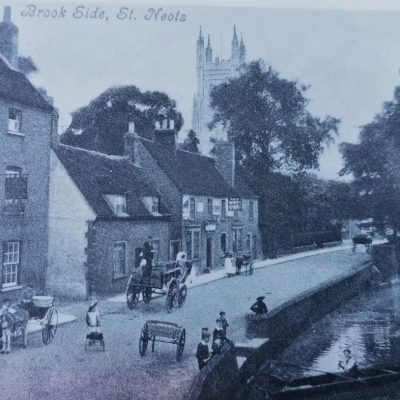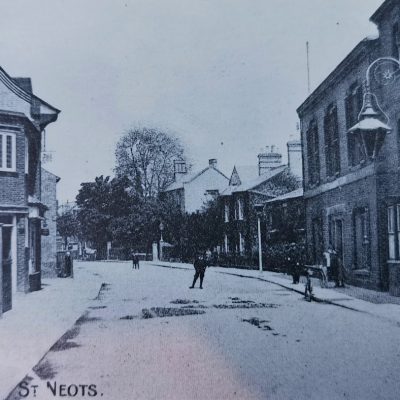Search by topic
- archaeology
- Building of Local Interest
- charity
- church
- crime
- dressmaker
- fire
- Great Eastern Railway
- Listed building
- Mapping Relief
- medieval
- oral history
- poverty
- Public House
- Rattee & Kett
- Religious House
- Roman
- scholar
- school
- Then and Now
- tudor
- women
- work
- world war one
- world war two
Search by text
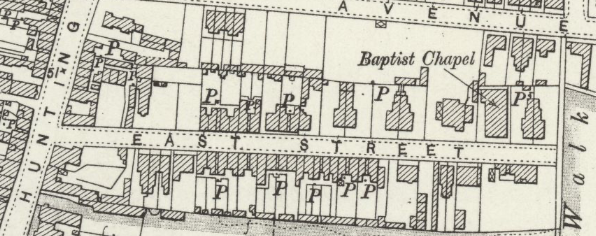 East Street, St Neots - OS 1901
East Street, St Neots - OS 1901East Street, St Neots
History of East Street
East Street was the location of the murder of Annie Holmes in 1898.
The account is given in detail in ‘Cambridgeshire Murders’ by Alison Bruce.
See Cambridge Independent Press 10.6.1898: St Neots Murder Trial. Verdict of Guilty. Horsford to be Hanged.
Annie Holmes was the first cousin of Walter Horsford. She was 12 years older and he was born in 1872 and had lived with his parents in Stow Longa near Spaldwick. By the 1890s he was described as a respectable farmer. By 1897 he was having an affair with Annie Holmes whose husband had died in the mid 1880s. In 1895 she went to live in Stoney, near Kimbolton with her two children. She then gave birth to another child.
Horsford visited her often but in October 1897 she moved to East Street, St Neots. A few days later Horsford married another woman, Bessie.
Horsford made two more visits; in December Annie told him that she was pregnant. Horsford was not happy about this and clearly wanted to hide the fact from his new wife and people generally.
On the 7th January 1989, instead of a promised visit, Horsford sent Annie a packet of powder which had written on it that it was harmless but would produce an abortion. Annie’s children were Percy, 15, Annie, 14 and a baby aged 1. After the family had gone to be the daughter realised that her mother was very ill and called the neighbours. They called the doctor but he could do little and the mother died.
The police officer who was first on the scene was John Allen Purser. The following day Dr Arthur Cromac Turner carried out a post mortem which determined strychnine poisoning. The inquest was held that day. Horsford was called and he denied having ever written to Annie. However, later that day three written notes were found. One was was a packet which said ‘One does, take as told’, and another ‘Take in a little water; ’tis quite harmless. Will come over in a day or two and see you.’ It was Horsford writing and the packet contained 30 grains of strychnine.
On the 10th Horsford was arrest by Purser at his farm in Spaldwick. On 27th January he was charged with perjury and wilful murder.
The trial took place on 2nd June. The case took five days but the jury returned a verdict of guilty after 25 minutes. Horsford was sentenced to death and taken to Chesterton prison. He was executed on 28th June 1898 at Cambridge gaol.
Three other deaths were later to be associated with Horsford though nothing was ever proven. A woman called Fanny James who was pregnant at the time died by what could have been strychnine; one of her relations, a Mr James died soon after drinking a beer bought by Horsford; another girl died after receiving a packet addressed by Horsford.
Contribute
Do you have any information about the people or places in this article? If so, then please let us know using the Contact page or by emailing capturingcambridge@
License
This work is licensed under CC BY-NC-SA 4.0





